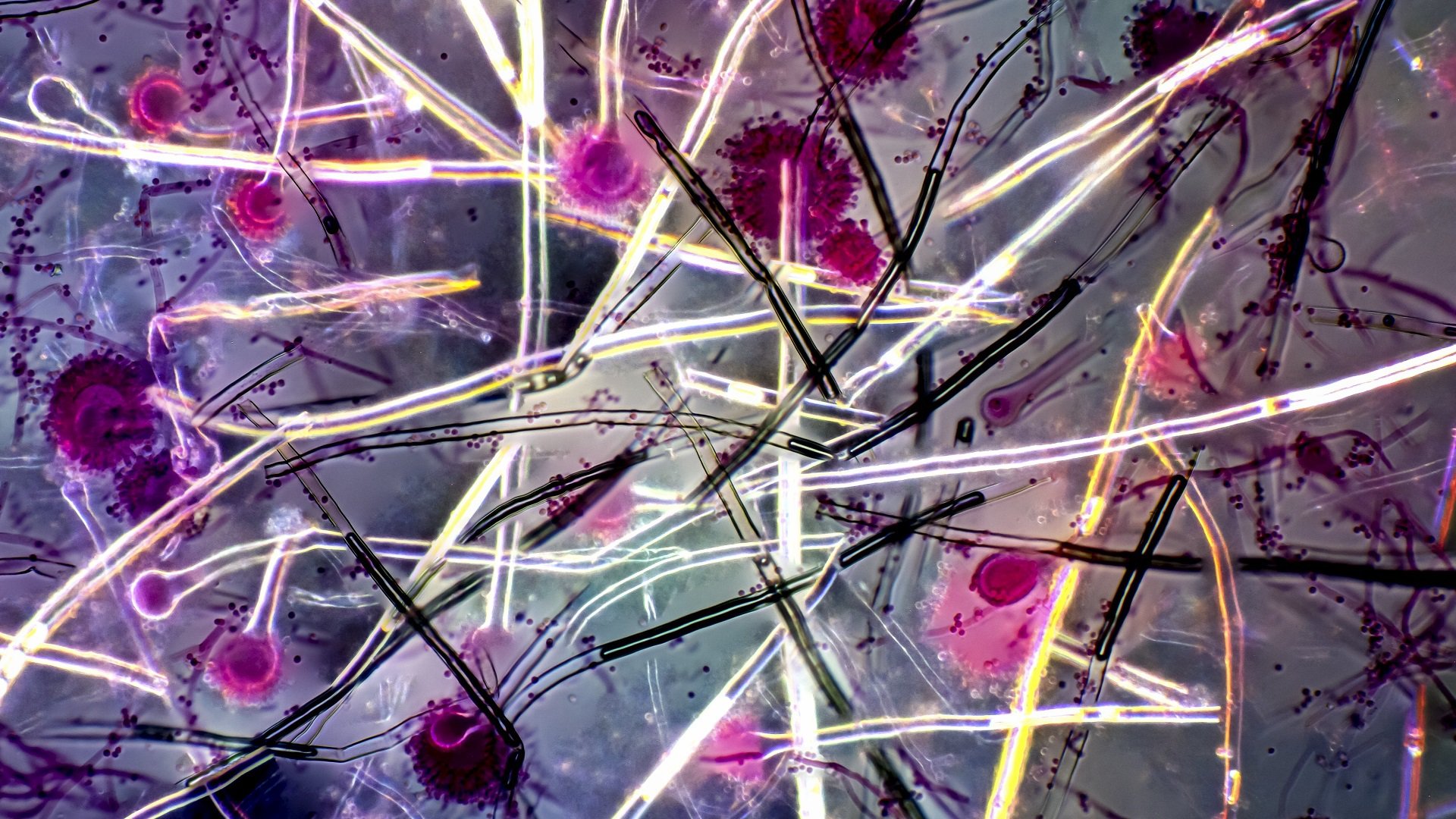Aspergillus is a genus of fungi that are found all over the world and in all conditions. From the North Pole to the Sahara, and from the planter to the joints between the bathroom tiles. Many of the species can withstand a variety of conditions. For example, they survive temperatures of 6 to 55 ° C, an acidity of pH 1.5 to 12, and live in both water and dry conditions. Aspergillus wentii, for example, lives in both water purification plants and desert soil. But it can be even more extreme. Asperillus penicilloides can live in relative humidity as low as 58%, which is deadly to many other animals, plants and microbes.
Aspergillus is a genus of fungi that are found all over the world and in all conditions. From the North Pole to the Sahara, and from the planter to the joints between the bathroom tiles. Many of the species can withstand a variety of conditions. For example, they survive temperatures of 6 to 55 ° C, an acidity of pH 1.5 to 12, and live in both water and dry conditions. Aspergillus wentii, for example, lives in both water purification plants and desert soil. But it can be even more extreme. Asperillus penicilloides can live in relative humidity as low as 58%, which is deadly to many other animals, plants and microbes.
Holy water sprinkler
The name Aspergillus comes from the Latin "aspergillum" for holy water sprinkler. The discoverer of these fungi, professor of botany and priest Pier Antonia Micheli (1679-1737) found that the reproductive structure of the fungus resembled a holy water sprinkler.
Full of useful enzymes
Many Aspergillus species live in symbiosis with plants. They absorb nutrients from the soil and give this to the plant in exchange for sugars that the plant makes through photosynthesis. The fungi break down organic molecules in the soil into smaller pieces. They do this with the help of all kinds of different enzymes. Not only plants, but also we benefit from the diverse enzyme production by Aspergillus fungi. In biotechnology Aspergillus niger is one of the most commonly used fungi. For example, it produces the enzyme glucoamylase for the production of glucose syrup from starch, the enzyme pectinase for clarifying wine and fruit juice, protease for cheese production, and much more. In addition, species such as Aspergillus sojae and A. oryzae are indispensable in the production of soy sauce and rice wine. The use of Aspergillus in biotechnology is almost endless.
Every advantage has its disadvantage
Yet this huge diversity also has a disadvantage. Of the hundreds of different Aspergillus species, there are those that can make us sick or cause food spoilage. Species that break down plant molecules in the wild can do the same in agriculture and are considered plant diseases. Aspergillus niger, so useful in biotechnology, can also produce toxins (mycotoxins) and cause serious fungal infections in the ear. And other strains can cause a wide range of diseases known as aspergillosis. Yet this concerns only about fifty species from a diversity of hundreds that are very handy and tasty.

